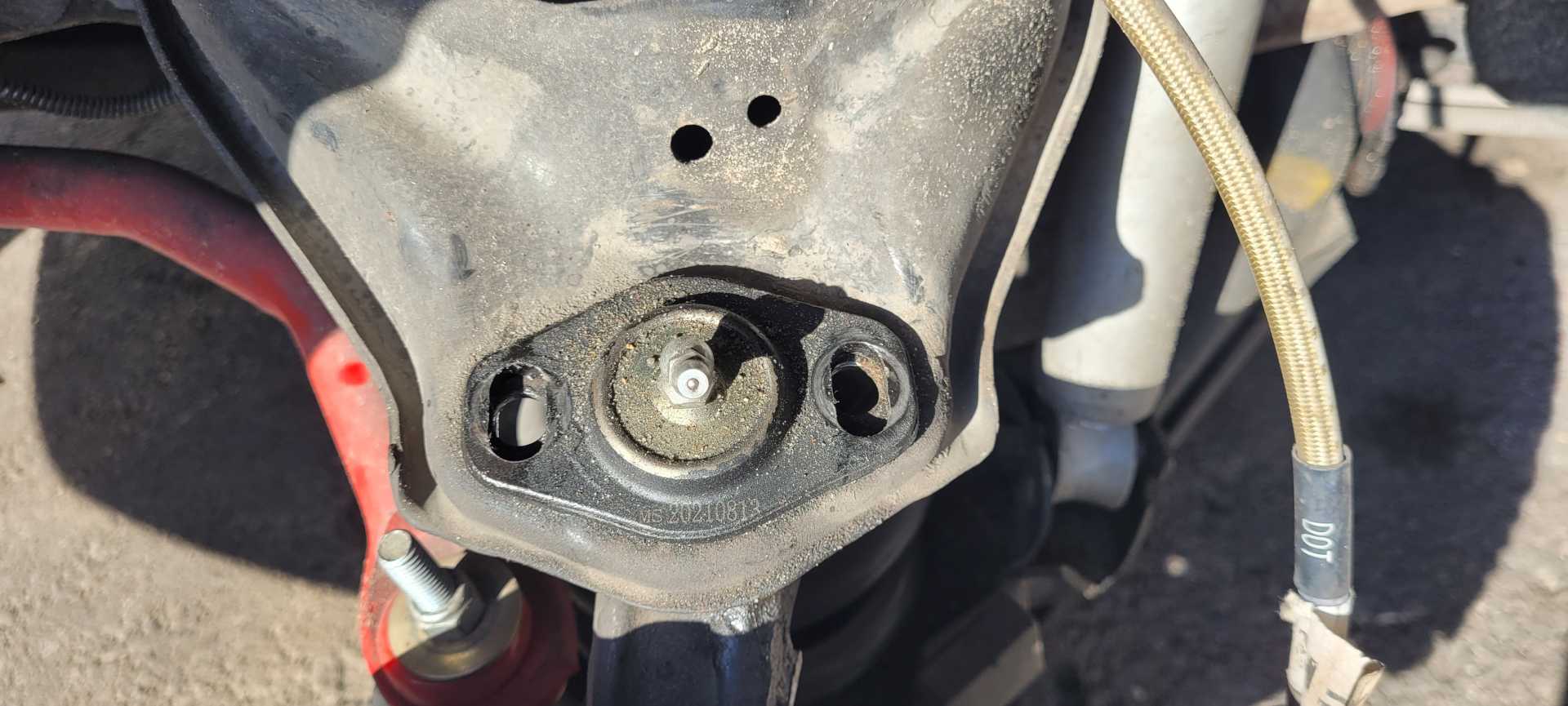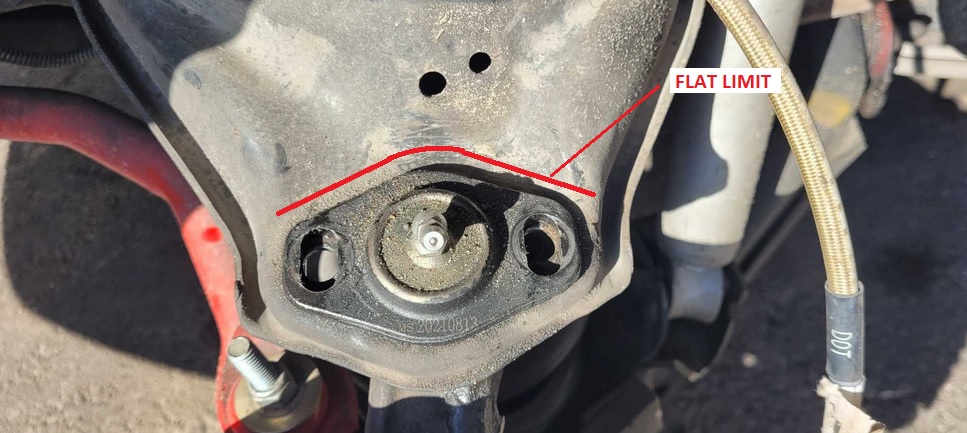I ran into the same problem when I lowered my 1987 GT by about 1 inch. All I could get was -0.7 degrees.
I also have slightly different adjustable (slotted) ball joints that what you have. I believe mine are from Rodney Dickman.
I ground the large round hole for the ball joint on the A-Arm to allow the ball joint to slide inward. As pmbrunelle mentioned, the ball joint also jams against the a-arm where it starts to rise. Tapering the bottom of the ball joint slightly where it interferes with the A-Arm gets you a lot of extra movement since the a-arm only "slowly" curves upward. Tapering the bottom is probably more than you need to do though actually.
After I did all that, I could get -3.5 degrees. I drove the car a bit before taking it in for another alignment. The -3.5 degrees camber had an undesirable impact on ride quality. Particularly, the car seemed to tramline and wander. In my opinion, -3.5 degrees is way too much.
Ultimately, I had the car set to the maximum camber Robert Wagoneer recommends in his book "High Performance Fieros" which is -1.7 degrees. The car handles well with this setting.
I was concerned for the removal of structural metal and the slotting of holes. After studying the configuration, it looks to me like the upper a-arm does not take road-force loads (which is all done by the lower control arm and spring assembly). The upper a-arm only takes tension loads to control wheel alignment. I have since taken my car out for Track Days and Autocross and have driven it extensively at speed and the ball-joint bolts have not slipped. (My shock mounts for a rear wheel HAVE slipped, but that is another story.)
[This message has been edited by Brian A (edited 12-06-2024).]




















